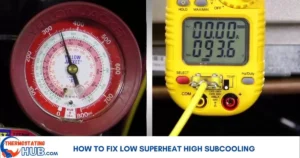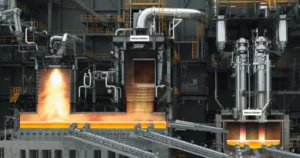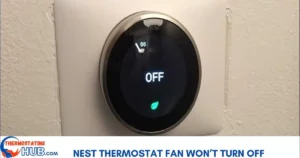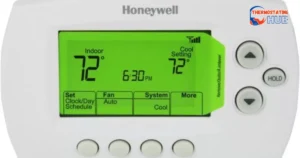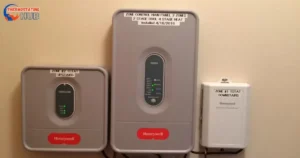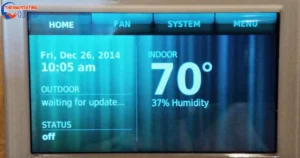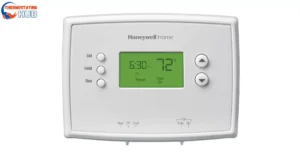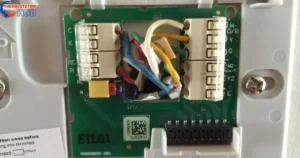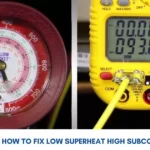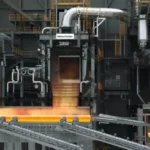If your furnace ignitor lights up, but you do not see any flames, there could be a few reasons behind it. Possible culprits include a faulty or closed gas valve, dirty burners, a malfunctioning ignition assembly, or an open high-limit switch.
To troubleshoot and address this issue, you’ll want to ensure the gas valve is operating correctly, check for dirty burners, and inspect the ignition assembly and high-limit switch for malfunctions.
🔍 Quick Tip: Regular maintenance, like cleaning burners and checking components, can help prevent issues and keep your furnace running smoothly.
Possible Reasons: A Furnace ignitor lights but no flame from the main burner
| Possible Cause | Fix |
| Faulty gas valve | Replacement |
| Bad circuit control board | Replacement |
| Faulty/open high-limit switch | Replace high limit switch |
| Dirty burner carry-over ports | Try cleaning the burner carry-over ports |
Pro Tip: If you’re dealing with a faulty gas valve or a bad circuit control board, opting for replacements is the key. Meanwhile, for a selective high limit switch or dirty burner carry-over ports, consider replacing or cleaning as needed for a seamless fix. Regular maintenance keeps your furnace in top-notch condition!
Faulty Gas valve
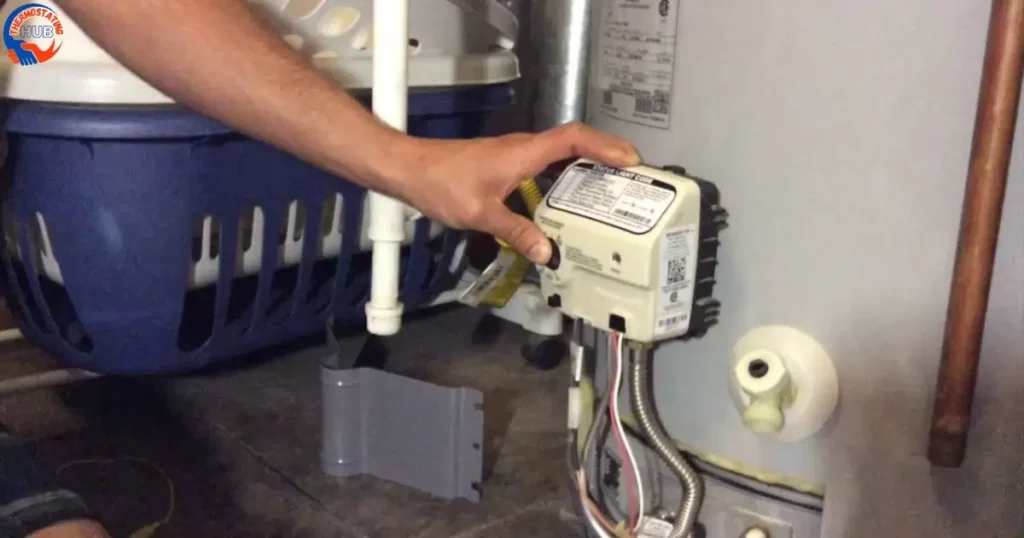
If the furnace igniter lights up, but there’s no flame in sight, it’s crucial to make sure the gas valve is functioning correctly and allowing gas to flow through.
First things first:
Step 1: Check your gas supply. Ensure other gas appliances are operating to confirm the gas meter is on.
🔍 If other appliances aren’t working, double-check that the meter is turned on.
Step 2: Confirm the manual shutoff valve at the furnace is open and the electric gas valve is set to “on.”
Assuming everything checks out, and the igniter lights up, but no flame is kicking in, here’s a troubleshooting step:
- Turn off the manual shutoff valve, open the pipe union or flex connector, then briefly turn the manual shutoff valve back on to ensure a consistent gas supply.
Additional ways to confirm gas supply to the burners:
- Listen for a hissing sound near the burners – that’s a sign of gas pressure.
- 👃 If there’s gas, you might also catch the unmistakable odor of it.
Remember, safety always comes first when dealing with gas appliances. If you’re uncertain or uncomfortable with any step, it’s best to consult a professional technician to avoid potential hazards. Your well-being is our top priority!
Bad Circuit Control Board
Assuming everything you’ve checked so far is clear, it’s time to verify if the furnace control board is giving the gas valve the necessary juice.
Here’s what you can do:
- Connect an AC voltmeter to the wires leading to the gas valve. Then, crank up the thermostat to the heat setting, ensuring it’s set above the room temperature.
- Once the igniter works and heats up, the circuit board should kick in, sending 24 VAC to the gas valve and initiating the gas flow.
- However, if no voltage shows up, you’re likely dealing with a glitchy circuit board that might need a replacement.
- Conversely, if the voltage is present, but no gas is making its way out, it’s likely a hiccup in the gas valve, and a replacement might be on the cards.
Remember, dealing with electrical components requires caution. If you’re not comfortable handling these tasks, it’s wise to consult with a professional technician for a safer resolution. Your safety is paramount!
High Limit Switch
When the high limit switch acts up, it might throw a wrench into the works, preventing the burners from igniting, even if the igniter is doing its job.
Let’s break it down:
The high limit switch is a safety feature on a furnace that steps in when there’s restricted airflow, causing the furnace to overheat. In such a scenario, the high-limit switch kicks in, putting the brakes on the furnace operation.
Now, let’s have a look into some potential culprits triggering the high limit switch:
Dirty Air Filter
Inspect your filters for dirt. Blocked filters limit airflow into the furnace, causing a shortage of air in the heat exchanger, ultimately leading to overheating. To tackle this problem, swap out dirty air filters with clean ones. This simple step ensures proper airflow and prevents overheating issues in your furnace.
Blockage in the Air Duct
Check the ductwork for potential hurdles like blockages, twisted ducts, or disconnected sections. These obstacles can impede the smooth flow of hot air, leading to overheating. To address this concern, clear any obstructions in the air ducts, allowing for unobstructed airflow and preventing overheating issues.
Blocked/Closed Air Vents
Closed vents are another potential culprit for overheating, prompting the high limit switch to intervene. Confirm that all vents are wide open and clear of obstructions or materials blocking them. This ensures proper airflow and helps prevent the high limit switch from tripping. 🚪
Bad Blower Motor
To examine the blower motor, give it a whirl—literally. When the furnace is off, try manually spinning the blower wheel to check if it’s seized, an uncommon issue.
🔄 If the blower motor is seized, unfortunately, a replacement is in order.
However, the snag might be with the motor capacitor if the blower motor spins freely with a manual turn. In that case, replacing the capacitor is the key to resolving the problem.
Dirty carry over ports
Sometimes, the absence of flames from the burners can be traced back to dirty ‘carry-over ports’ clogged with debris, hindering the ignition of the adjacent burners.
Here’s a quick fix you can try:
If luck is on your side, tapping or banging on the burners might dislodge the gunk, allowing the burners to light up properly again. You can use an object like Channel Lock pliers for this. However, exercise caution to avoid dislodging or misaligning the burners, as that could worsen the situation and potentially damage them.
So, give the burners a moderate tap, allowing the debris to break loose.
If this DIY approach falls short, the next step involves removing the burners and thoroughly cleaning them with a wire brush. Pay special attention to clearing the carry-over ports to ensure optimal burner performance.
How to clean the Furnace gas burners
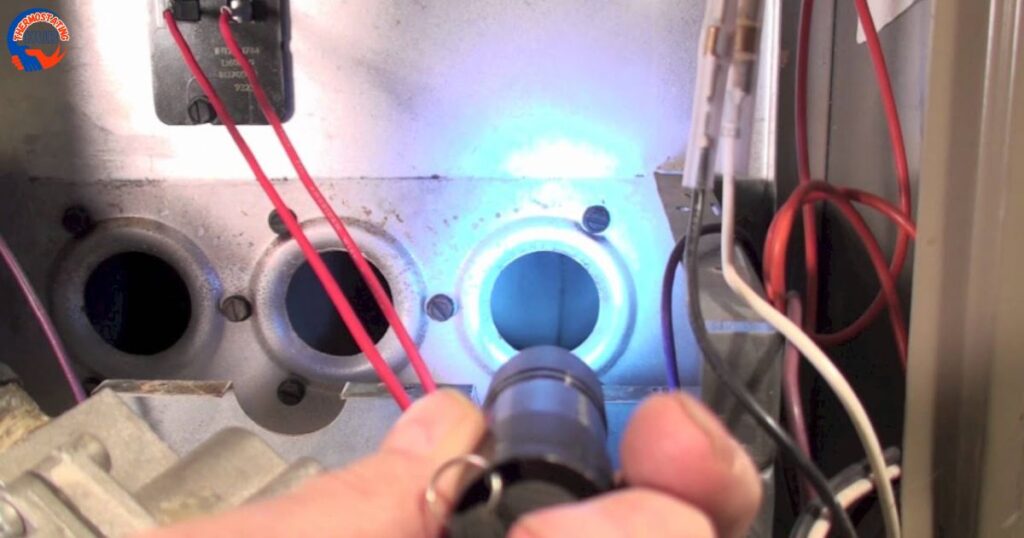
Take a closer look at the gas funnels on the gas burner, and if you spot any rust, it’s time for a cleanup.
Here’s what you should do:
Inspect the narrow vertical airways responsible for distributing gas to the neighboring burners. If rust or any signs of it are present, thoroughly clean these airways. Since the burners rely on each other for ignition, scrape away the rust to ensure a smooth operation.
Once the cleaning process is complete, carefully put everything back into place. This maintenance step ensures that your gas burner functions optimally. 🔍
Pros and Cons of Furnace Ignitor Lighting Without Flame: Unveiling the Upsides and Downsides
Regarding furnace ignitor lighting without a flame, there are advantages and disadvantages worth considering. Let’s delve into the pros and cons to help you make an informed decision.
| Pros | Cons |
| 1. Increased Energy Efficiency | 1. Limited Flame Monitoring |
| 2. Reduced Emissions | 2. Potential for Ignition Issues |
| 3. Enhanced Safety | 3. Dependency on Electronic Components |
| 4. Quieter Operation | 4. Initial Installation Costs |
| 5. Improved Control and Precision | 5. Maintenance Complexity |
Understanding these factors can guide you in determining whether a furnace with ignitor lighting without flame aligns with your preferences and requirements.
Exploring the Future Scope of Furnace Ignitor Issues: Anticipating Trends and Solutions
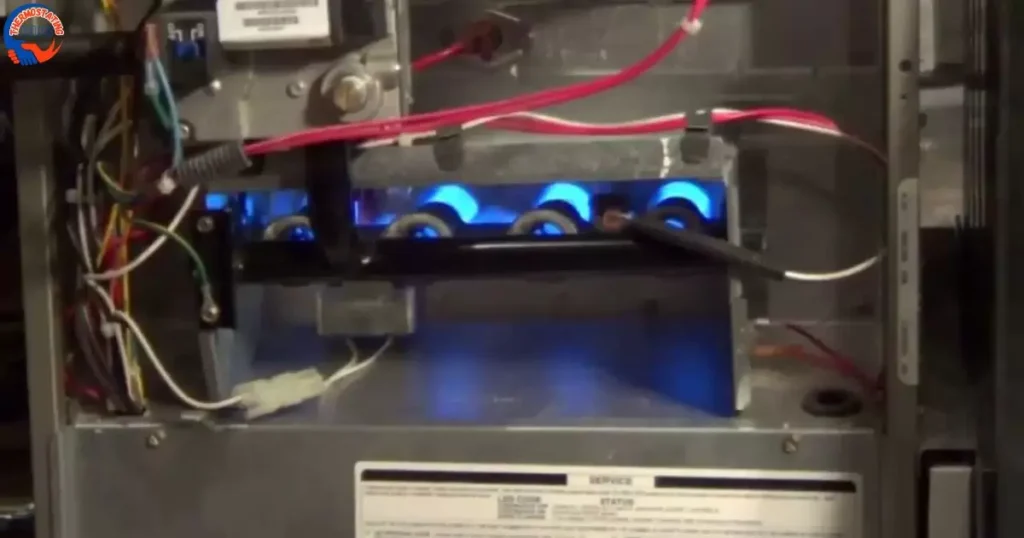
As we gaze into the crystal ball of furnace technology, we must foresee upcoming ignitor issues and the inventive solutions that might unfold.
Staying one step ahead of the game enables us to usher in a new era of heating systems that are more efficient but also reliable and user-friendly.
Join us on a journey to uncover the changing terrain of furnace ignitor challenges and the thrilling trends poised to offer solutions, ensuring our homes remain warm and cozy in the years to come. 🌐🔍
Key Features and Solutions for the “Lights But No Flame” Predicament
Encountering a scenario where the lights are on, but no flame can be a concern with heating systems. To address these predicaments, it’s essential to highlight key features and practical solutions:
Key Features:
Advanced Ignition Monitoring:
Implementing sophisticated sensors for real-time monitoring to ensure proper ignition.
Emergency Shutdown Mechanism:
Introducing a failsafe mechanism that halts the system if ignition issues persist, enhancing safety.
Diagnostic Alerts:
Incorporating intelligent diagnostic features that promptly notify users of potential ignition problems.
Multi-stage Ignition Systems:
Utilizing multi-stage ignition processes for improved reliability and consistent flame initiation.
Solutions:
Regular Maintenance Checks:
Conduct routine inspections and maintenance to address any potential issues before they escalate.
Professional Servicing:
Seeking the expertise of HVAC professionals for periodic servicing to ensure the entire ignition system operates optimally.
Upgrade to Smart Thermostats:
Integrating smart thermostats that offer remote monitoring allows users to promptly detect and address ignition issues.
User-Friendly Troubleshooting Guides:
Providing clear and accessible troubleshooting guides for users to identify and resolve minor ignition problems independently.
By incorporating these key features and solutions, manufacturers can enhance the reliability of heating systems, ensuring a consistent and safe flame ignition process for users.
Answers To Key Questions
Why won’t my furnace ignite after hearing a click?
Check for issues with the ignitor, gas valve, or thermostat. Consult a professional if needed.
What causes the furnace blower to run without a flame?
Possible problems include ignition system issues like a faulty ignitor or gas supply problems. Inspection and professional assistance are recommended.
What are signs of a faulty furnace ignitor?
Look for a lack of heat, repeated clicking during ignition, or visible damage to the ignitor. Consider replacement if these signs are present.
How can I reset my furnace ignitor?
Furnace ignitors usually don’t have a reset button. Turn off the furnace power, wait, and then restart. For persistent issues, refer to the manual or seek professional help.
Final Thoughts
To wrap it up, the problems outlined in this guide are among the most prevalent reasons for a furnace ignitor lighting up without a flame following suit.
For sustained efficiency and to avoid such hiccups, it’s highly advisable to schedule HVAC tune-ups at least once after each season.
Regular maintenance ensures your HVAC system operates smoothly and addresses potential issues before they escalate. Keep your home comfortably heated by giving your system the attention it deserves.

I’m Matthew Porter, the HVAC enthusiast at thermostatinghub.com. Beyond being a writer, I’m your dedicated problem solver for all things heating and cooling. Join me on my blog for a storytelling adventure through the HVAC universe. Together, let’s transform your comfort challenges into tales of coziness!
![Furnace Ignitor Lights But No Flame [Fixed]](https://thermostatinghub.com/wp-content/uploads/2023/12/furnace-ignitor-lights-but-no-flame-fixed.webp)



